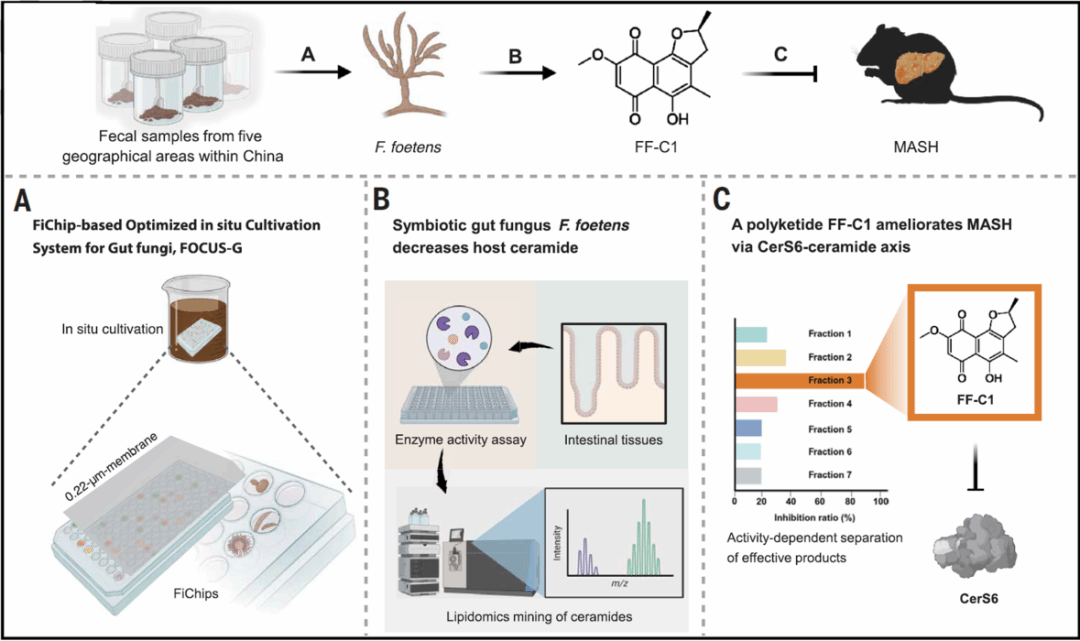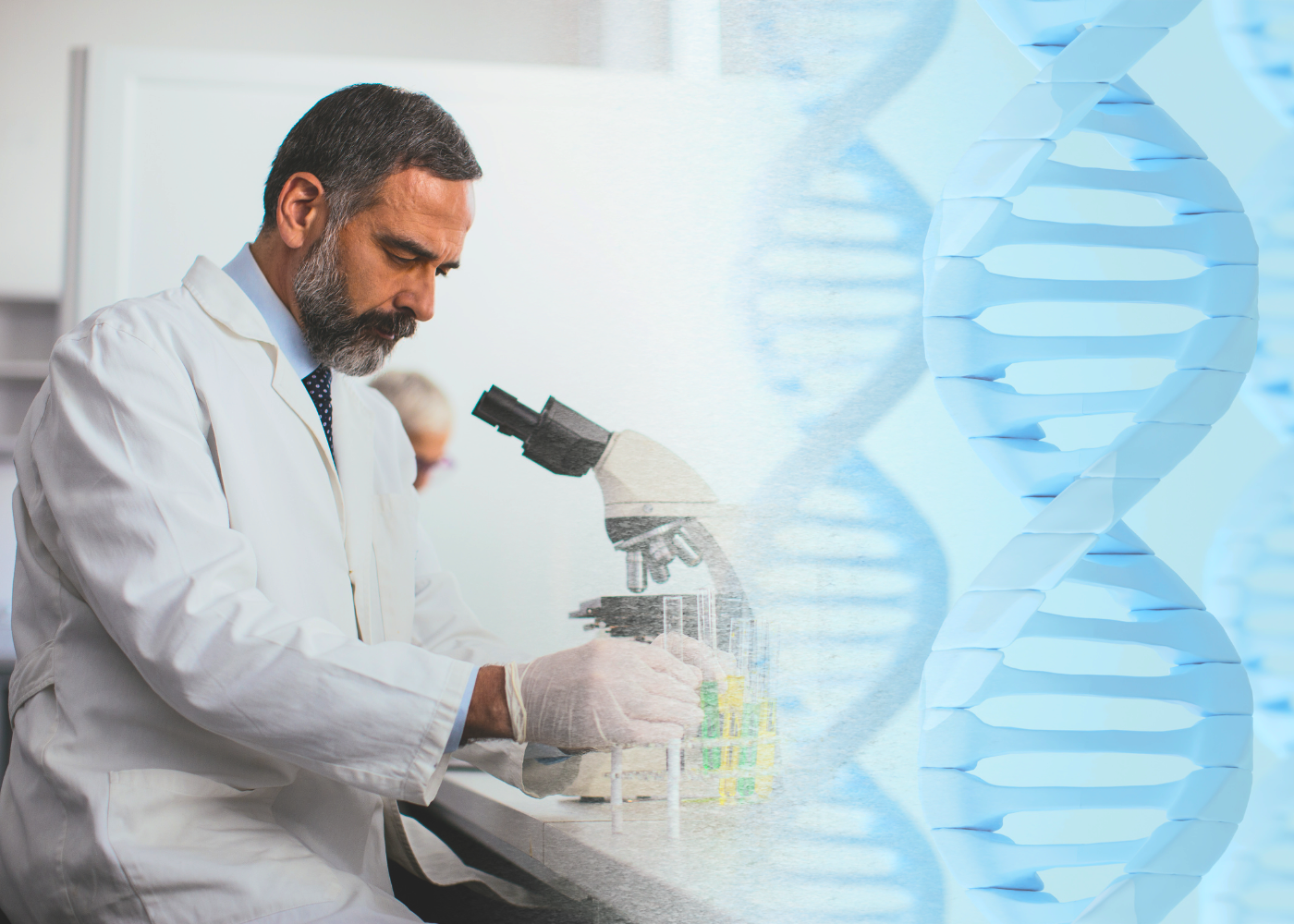Gut Fungi Breakthrough: Novel Fungus Offers Hope for Metabolic Diseases
May 19, 2025
Peking University, May 19, 2025: A joint study by Jiang Changtao, Professor at PKU Third Hospital, and the team of Qiao Jie, President of PKU Health Science Center, has unveiled a gut fungus called “Fusarium foetens” that could transform treatment for metabolic dysfunction-associated steatohepatitis (MASH). The research paper, titled “A symbiotic filamentous gut fungus ameliorates MASH via a secondary metabolite-CerS6-ceramide axis”, was recently published in Science. The fungus produces FF-C1, a compound that blocks CerS6, an enzyme responsible for producing ceramides, fat molecules linked to metabolic disorders. By reducing ceramide levels, F. foetens improved liver health in mice, offering a promising new approach for MASH and related conditions like polycystic ovary syndrome (PCOS).
Background
The gut’s fungal ecosystem, or mycobiome, remains largely unexplored compared to its bacterial components. Ceramides, regulated by six ceramide synthase enzymes (CerS1-6), are critical to metabolic health, with CerS6 specifically driving liver fat accumulation in MASH. The novel FOCUS-G platform (FiChip-based Optimized in situ Cultivation System for Gut fungi) overcomes longstanding challenges in studying gut fungi, enabling the discovery of F. foetens and its therapeutic potential.
Why It Matters
MASH affects over 100 million people worldwide and lacks effective treatments. Gut fungi, often called the “dark matter” of the gut, play critical but poorly understood roles in immunity and metabolism. While yeast-like fungi are studied, filamentous fungi like F. foetens are underexplored due to difficulties in isolating and growing them in the gut’s oxygen-free environment. The discovery of F. foetens and its FF-C1 compound, enabled by FOCUS-G, addresses a critical gap in targeting ceramide-related disorders, with potential for MASH, PCOS, and other immune-related diseases.

Fig. 1. Design and Working Principle of FOCUS-G System.
FOCUS-G Innovation
The FOCUS-G system features three key innovations: (1) FiChip-based in situ cultivation for high-throughput fungal isolation; (2) symbiotic evaluation to assess gut adaptability under anaerobic conditions; and (3) integration with enzyme activity screening and lipidomic analysis to identify bioactive metabolites. From 100 fecal samples, 2,137 fungal strains (161 species) were isolated, with F. foetens uniquely thriving in the anaerobic colon. The system identified FF-C1, a polyketide metabolite, as a potent CerS6 inhibitor, validated through knockout strains and supplementation experiments.
Key Findings
In mouse models of MASH, F. foetens colonization reduced hepatic steatosis, inflammation, and fibrosis by inhibiting CerS6 via FF-C1, lowering intestinal and circulating ceramide levels. The fungus stably colonized the gut without adverse effects, confirming its commensal nature.
The team’s prior work linked gut microbes to PCOS, drug responsiveness, and bile acid modifications, underscoring the broader role of gut microbiota in health. These findings establish F. foetens as a novel therapeutic candidate for metabolic disorders. F. foetens produces FF-C1 to inhibit CerS6, reducing ceramide levels and improving MASH outcomes in mice.
Significance
The FOCUS-G system and F. foetens discovery mark a paradigm shift in gut fungal research, illuminating the role of filamentous fungi in host physiology. Beyond MASH, this platform enables exploration of fungal contributions to immunity and metabolism, paving the way for microbial-based therapies for chronic diseases like PCOS and other immune-related disorders.
This article is featured in the "Why It Matters" series. More from this series.
Click “here” to read the paper.
Written by: Akaash Babar
Edited by: Zhang Jiang
Source: PKU News (Chinese)

